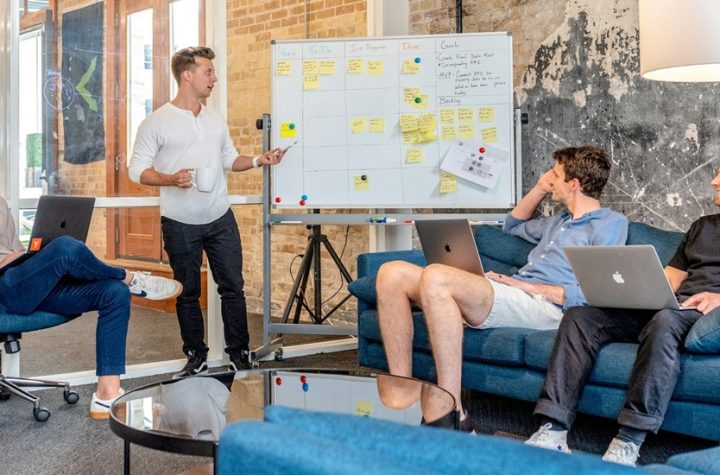
Pic Courtesy - Unsplash
Artificial intelligence (AI) is transforming workplace safety and risk avoidance, providing entrepreneurs with new capabilities for ensuring a safe working environment. Businesses can use AI to improve safety standards, reduce risks, and avoid accidents, resulting in higher production and employee happiness.
Let’s look at how AI is improving workplace safety through real-time monitoring, hazard detection, accident prevention, process analysis, process violation detection, and risk assessment.
1. Real-Time Monitoring : Enhancing Safety with Continuous Oversight
AI provides real-time monitoring of workplace surroundings by leveraging sensors, cameras, and IoT devices. This device continuously collects data on ambient conditions, equipment status, and worker behavior, allowing safety managers to gain useful insights.
Case Study: Construction Industry
In the construction industry, businesses such as SmartCap have developed AI-powered wearables that continuously measure workers’ fatigue levels. These gadgets use EEG sensors to identify early indicators of weariness, allowing workers and managers to take preventative measures before an accident occurs. This proactive strategy improves not only safety, but also overall productivity.
2. Helps in Hazard Detection : Identifying Risks Before They Escalate
AI algorithms can examine massive volumes of data to uncover job hazards. By analyzing historical incident data and present conditions, AI systems may forecast and alert to potential risks, allowing preventive steps to be implemented.
Case Study: Manufacturing Plants
Companies such as Sight Machine employ artificial intelligence to monitor equipment and discover anomalies that could suggest possible threats. Their software analyzes sensor data from equipment to forecast breakdowns or safety hazards, allowing maintenance teams to solve issues before they cause accidents.
3. Initiates Accident Prevention Measures : Proactive Safety Interventions
AI detects risks and initiates accident prevention procedures. By combining AI and automated processes, startups can ensure that corrective steps are implemented instantly, lowering the likelihood of mishaps.
Case Study: Warehouse Automation
Amazon uses AI-powered robots in their warehouses to complete monotonous jobs, reducing human involvement in potentially harmful circumstances. These robots employ machine learning algorithms to securely navigate the warehouse, avoiding collisions and providing a safer working environment for humans.
4. Helps in Process Analysis : Optimizing Workflows for Safety
AI can examine workplace processes to detect inefficiencies and potential safety hazards. By evaluating operational patterns, AI systems can offer changes to workflows that reduce risk and improve safety.
Case Study: Oil and Gas Industry
Companies in the oil and gas industry, such as BP, use AI to optimize drilling operations. AI analyzes data from drilling sensors to detect risky activities or probable equipment breakdowns, allowing teams to modify methods and improve safety protocols.
5. Detects Process Violations : Ensuring Compliance with Safety Standards
AI systems may detect process infractions in real time to ensure compliance with safety laws and company policies. This guarantees that safety protocols are followed, which reduces the likelihood of accidents.
Case Study: Food Processing Industry
Cargill employs AI-powered video analytics to ensure that food processing plants follow safety regulations. The technology detects deviations from conventional operating processes and notifies supervisors, so promoting a safe working environment and assuring food safety.
6. Aids in Risk Analysis : Comprehensive Risk Assessment
AI enables companies to undertake comprehensive risk assessments by analyzing data from a variety of sources, such as past incidences, environmental conditions, and operational processes. This enables businesses to detect possible risks and devise effective risk mitigation methods.
Case Study: Financial Services
In the banking sector, organizations such as JPMorgan Chase use AI for risk assessments to improve workplace safety. AI models evaluate data to identify potential security threats or compliance issues, allowing the organization to take appropriate risk-mitigation actions.
AI is proven to be a great asset for businesses seeking to improve workplace safety and risk prevention. Real-time monitoring, hazard detection, accident prevention, process analysis, process violation detection, and risk analysis can help startups establish safer work environments, enhance employee morale, and improve operational efficiency. As AI technology advances, its role in workplace safety will become increasingly important, providing even more inventive risk management solutions.




More Blogs
Expanding Globally: Navigating Challenges and Leveraging Strategies
7 Ways of Making Progress: A Startup Expert’s Guide
AI in the Insurance Business: Revolutionizing the Industry